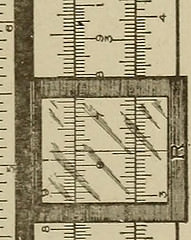GCSE Mathematics Compared to GCE – A Betrayal of Standards

In the U.K prior to 1986 there were two separate exams for 16 year-olds, running parallel to each other. These were the C.S.E.(Certificate of secondary education) and the G.C.E.(General Certificate of Education).
The G.C.E. was as an exam-only based qualification that would allow students to carry on with secondary education to do A-level courses. The C.S.E. on the other hand was a slightly inferior qualification. It had a course work element to it and the exams were less rigorous. That is the questions were seen as easier and there was less emphasis on recalling facts. However, the two qualifications did have some overlap to some degree. The highest result at C.S.E( a grade 1) equated roughly to the third highest at G.C.E(grade C).
The G.C.E pass mark and grades were decided upon using a statistical method. All the marks converted to percentages from were written along the x-axis of a graph, with the frequency of each mark plotted above. The result was what is called a Normal Distribution curve. This is a symmetrical curve that rises from zero, reaches a maximum and descends to zero again. In a perfect curve, the maximum corresponds to the average mark for the test.
To cut through a lengthy statistical explanation, the pass mark was decided upon from the shape of the curve and the relative numbers of students above and below this mark. In this way, assuming intelligence is a constant, approximately the same percentage of pupils would pass each year. As a result of the huge numbers of students involved, the exam was deemed to be fair and did seem to maintain standards.
G.C.S.E. on the other hand depends on actual marks to divide its grade boundaries. Unlike G.C.E, there is no pass mark in G.C.S.E. Everyone passes. So if the exam gets easier more students get higher grades; and this has been the state of affairs since the beginning of G.C.S.E. Year on year the numbers of A and A-star grades in mathematics has steadily increased.
The beginning of the debate into the lowering of standards in schools centred around the inclusion of ‘course work’, some of it as high as 30% of the total marks. The marking of this course work was open to abuse by teachers, as was the creation of it by students in the first place. Parents eager to improve the grades of their offspring were also drawn into the game. It was only in 2007 that the U.K. government decided that course work in G.C.S.E. mathematics should be abandoned (eleven years after its inception).
I am a retired maths teacher and feel well placed to make a measured call on the issue of standards. I have taught all three exams (C.S.E., G.C.S.E. & G.C.E.) in my time, over 25 years. Recently two G.C.E. maths papers (1957, 1968) came into my possession. Objectively I made the comparison with this year’s G.C.S.E. paper (2009). Unsurprisingly G.C.S.E. did not fair well. This result is more than just disappointing. It is a sad indictment of our education system. I shall be making a detailed subjective study of how these papers compare and will publish my findings in due course.
As if to confirm my lack of confidence in this qualification, I read that in the coming school year many
public(private) schools in the U.K. are starting their 15 year olds(year 10’s) on A-level mathematics courses, and completely side stepping G.C.S.E.
http://www.gcsemathstutor.com
http://www.a-levelmathstutor.com
